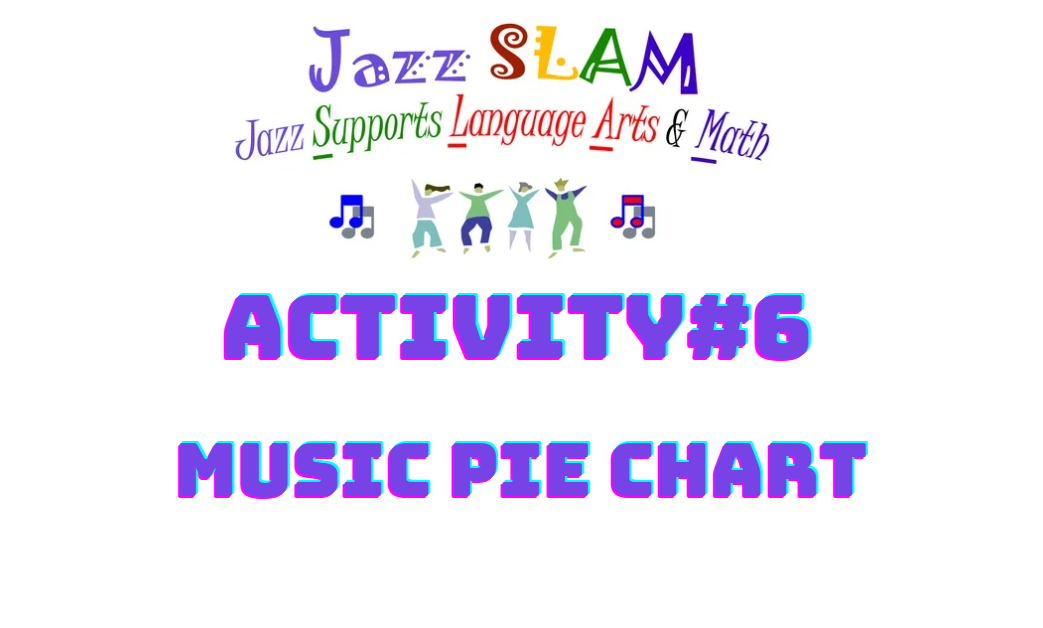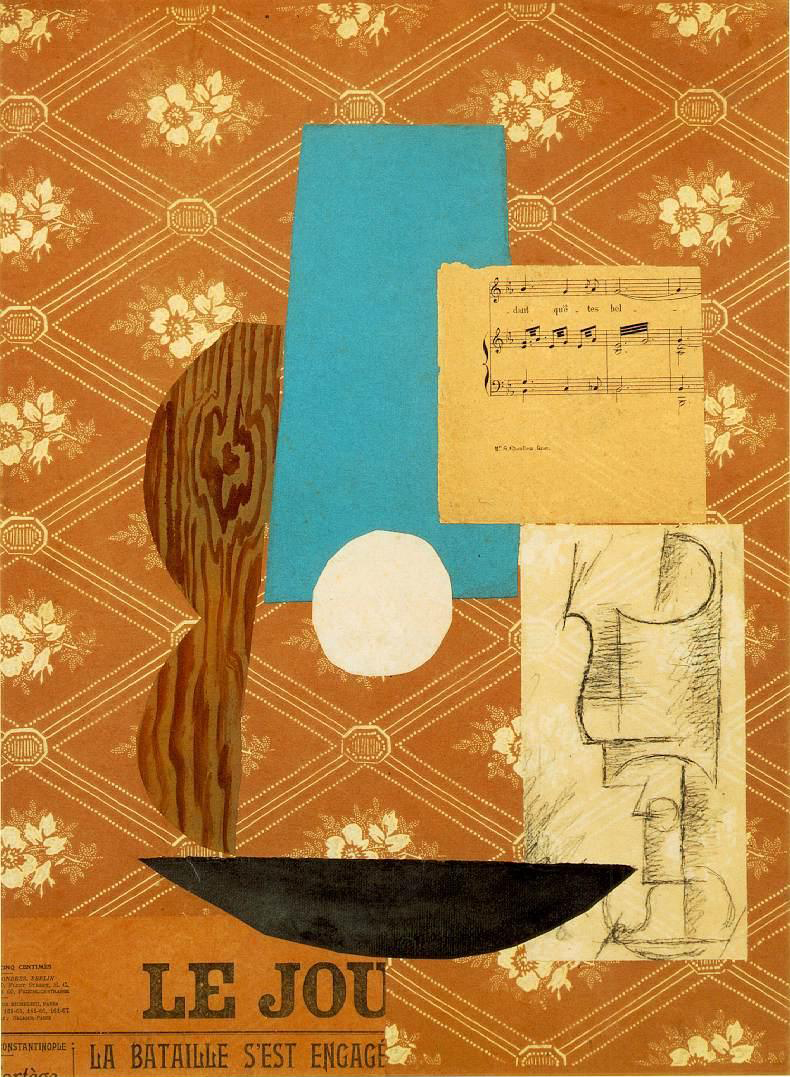About This Lesson
Learning Goals/Objectives
STUDENTS WILL BE ABLE TO:
- Explain how music and math are connected
- Identify mathematical fractions in notes
- Create a 4-beat rhythm pattern using a pie chart
- Perform a 4-beat rhythm pattern.
Materials
- Whiteboard or chart paper
- Marker
- Paper
- Pencil
Common Core Standards & NGSSS Music Standards
Common Core Standards:
3.OA.A.2 Interpret whole-number quotients of whole numbers, e.g., interpret 56 ÷ 8 as the number of objects in each share when 56 objects are partitioned equally into 8 shares, or as a number of shares when 56 objects are partitioned into equal shares of 8 objects each. For example, describe a context in which a number of shares or a number of groups can be expressed as 56 ÷ 8.
3.OA.A.3 Use multiplication and division within 100 to solve word problems in situations involving equal groups, arrays, and measurement quantities, e.g., by using drawings and equations with a symbol for the unknown number to represent the problem.
3.OA.A.4 Determine the unknown whole number in a multiplication or division equation relating three whole numbers. 3.OA.B.5 Apply properties of operations as strategies to multiply and divide.
3.OA.D.9 Identify arithmetic patterns (including patterns in the addition table or multiplication table), and explain them using properties of operations.
3.NF.A.1 Understand a fraction 1/b as the quantity formed by 1 part when a whole is partitioned into b equal parts; understand a fraction a/b as the quantity formed by a parts of size 1/b.
3.NF.A.2 Understand a fraction as a number on the number line; represent fractions on a number line diagram.
3.NF.A.3 Explain equivalence of fractions in special cases, and compare fractions by reasoning about their size.
3.MD.B.4 Generate measurement data by measuring lengths using rulers marked with halves and fourths of an inch. Show the data by making a line plot, where the horizontal scale is marked off in appropriate units—whole numbers, halves, or quarters.
4.MD.B.4 Make a line plot to display a data set of measurements in fractions of a unit (1/2, 1/4, 1/8). Solve problems involving addition and subtraction of fractions by using information presented in line plots. For example, from a line plot find and interpret the difference in length between the longest and shortest specimens in an insect collection.
4.NBT.B.4: Fluently add and subtract multi-digit whole numbers using the standard algorithm.
4.NBT.N.5 Multiply a whole number of up to four digits by a one-digit whole number, and multiply two two-digit numbers, using strategies based on place value and the properties of operations. Illustrate and explain the calculation by using equations, rectangular arrays, and/or area models.
4.NF.A.2 Compare two fractions with different numerators and different denominators, e.g., by creating common denominators or numerators, or by comparing to a benchmark fraction such as 1/2. Recognize that comparisons are valid only when the two fractions refer to the same whole. Record the results of comparisons with symbols >, =, or <, and justify the conclusions, e.g., by using a visual fraction model.
4.NF.B.4 Apply and extend previous understandings of multiplication to multiply a fraction or whole number by a fraction.
4.OA.A.2 Multiply or divide to solve word problems involving multiplicative comparison, e.g., by using drawings and equations with a symbol for the unknown number to represent the problem, distinguishing multiplicative comparison from additive comparison.
4.OA.C.5 Generate a number or shape pattern that follows a given rule. Identify apparent features of the pattern that were not explicit in the rule itself. For example, given the rule “Add 3” and the starting number 1, generate terms in the resulting sequence and observe that the terms appear to alternate between odd and even numbers. Explain informally why the numbers will continue to alternate in this way.
5.NBT.B.5 Fluently multiply multi-digit whole numbers using the standard algorithm.
5.NF.B.6 Solve real world problems involving multiplication of fractions and mixed numbers, e.g., by using visual fraction models or equations to represent the problem.
5.OA.B.3 Generate two numerical patterns using two given rules. Identify apparent relationships between corresponding terms. Form ordered pairs consisting of corresponding terms from the two patterns and graph the ordered pairs on a coordinate plane. For example, given the rule “Add 3” and the starting number 0, and given the rule “Add 6” and the starting number 0, generate terms in the resulting sequences, and observe that the terms in one sequence are twice the corresponding terms in the other sequence. Explain informally why this is so.
6.RP.A.3 Use ratio and rate reasoning to solve real-world and mathematical problems, e.g., by reasoning about tables of equivalent ratios, tape diagrams, double number line diagrams, or equations.
6.NS.A.1 Interpret and compute quotients of fractions, and solve word problems involving division of fractions by fractions, e.g., by using visual fraction models and equations to represent the problem.
6.NS.C.8 Solve real-world and mathematical problems by graphing points in all four quadrants of the coordinate plane. Include use of coordinates and absolute value to find distances between points with the same first coordinate or the same second coordinate.
6.EE.B.6 Use variables to represent numbers and write expressions when solving a real-world or mathematical problem; understand that a variable can represent an unknown number, or, depending on the purpose at hand, any number in a specified set.
6.EE.C.9 Use variables to represent two quantities in a real-world problem that change in relationship to one another; write an equation to express one quantity, thought of as the dependent variable, in terms of the other quantity, thought of as the independent variable. Analyze the relationship between the dependent and independent variables using graphs and tables, and relate these to the equation.
6.SP.B.5 Summarize numerical data sets in relation to their context.
NGSSS Music Standards:
MU.3.C.2.1 Evaluate performances of familiar music using teacher-established criteria.
MU.3.F.1.1 Enhance the meaning of a story or poem by creating a musical interpretation using voices, instruments, movement, and/or found sounds.
MU.4.C.2.1 Identify and describe basic music performance techniques to provide a foundation for critiquing one's self and others.
MU.4.C.2.2 Critique specific techniques in one's own and others performances using teacher established criteria.
MU.4.F.1.1 Create new interpretations of melodic or rhythmic pieces by varying or adding dynamics, timbre, tempo, lyrics, and/or movement.
MU.5.C.2.1 Define criteria, using correct music vocabulary, to critique one's own and others performance.
MU.5.C.2.2 Describe changes, using correct music vocabulary, in one's own and/or others performance over time.
MU.5.F.1.1 Create a performance, using visual, kinesthetic, digital, and/or acoustic means to manipulate musical elements.
MU.68.C.2.1 Critique personal performance, experiment with a variety of solutions, and make appropriate adjustments with guidance from teachers and peers.
MU.68.C.2.2 Critique, using correct music vocabulary, changes in one’s own or others’ musical performance resulting from practice or rehearsal.
MU.68.F.1.1 Create a composition and/or performance, using visual, kinesthetic, digital, and/or acoustic means to manipulate musical elements.
ESOL/ESE STRATEGIES
Steps
Step 1:
Review how music note values are mathematical fractions, demonstrating by drawing a pie chart(See page 4 of the JazzSLAM teacher guide for reference)
Step 2:
Pulse 4 times, with hands held up in a circle, for the whole note pizza pie rest.
Step 3:
After reviewing, draw a pie chart and create a4-beatrhythm that fits into 1 bar.
Step 4:
Have students practice the rhythm with you. Alternate between the 1 bar rhythm and a whole note rest (with hands pulsing 1,2,3,4 in the air.)
Step 5:
Have students get into groups of 3 or 4 and create their own .
Step 6:
Have students share out and the rest of the class clap each rhythm.
Rubric/Instrument for Assessment
4 Points(Advanced):
A score of four is a response in which the student demonstrates a thorough understanding of the concepts and/or procedures embodied in the task. The student has responded correctly to the task, used sound procedures, and provided clear and complete explanations and interpretations.
3 Points(Proficient):
A score of three is a response in which the student demonstrates an understanding of the concepts and/or procedures embodied in the task. The students’ response to the task is essentially correct with the procedures used and the explanations and interpretations provided demonstrating an essential but less than thorough understanding. The response may contain minor flaws that reflect inattentive execution of procedures or indications of some misunderstanding of the underlying concepts and/or procedures.
2 Points(Basic):
A score of two indicates that the student has demonstrated only a partial understanding of the concepts and/or procedures embodied in the task. Although the student may have used the correct approach to obtaining a solution or may have provided a correct solution, the students’ work lacks an essential understanding of the underlying concepts.
1 Point(Emerging):
A score of one indicates that the student has demonstrated a very limited understanding of the concepts and/or procedures embodied in the task. The students’ response is incomplete and exhibits many flaws. Although the students’ response has addressed some of the conditions of the task, the student reached an inadequate conclusion and/or provided reasoning that was faulty or in complete. The response exhibits many flaws or may be incomplete.
0 Points:
A score of zero indicates that the student has provided a completely incorrect or non-interpretable response or no response at all.
























